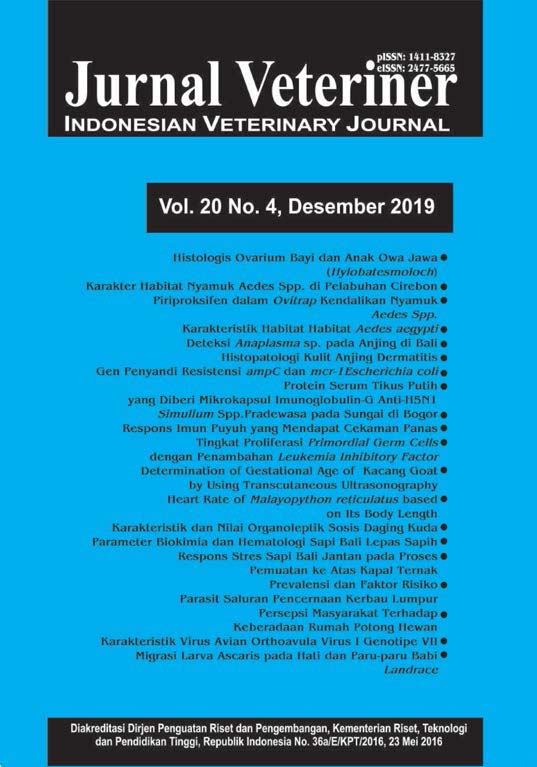Studi Kasus: Ascariosis Disertai Migrasi Larva pada Hati dan Paru-paru Babi Landrace (CASE STUDY: ASCARIOSIS ACCOMPANIED BY MIGRATION OF LARVAE IN LIVER AND LUNGS OF LANDRACE PIG)
Abstract
Cases of ascariosis due to infection with Ascaris suum are still prevalent in the world, including Indonesia. Apart from causing economic losses, ascariosis can also threaten human health because it is zoonotic. Case studies of ascariosis with typical white spot lesions in the landrace pig liver is described in this paper. Pigs aged 60 days old, sick for 10 days, thin and coughing gathered from the village of Suwung, Denpasar City. After necropsy and post mortem examination were done, tens of A. suum worms were found in the intestine and white spot lesions observed on the livers. Tissues of small intestine, large intestine, liver, lungs, kidney, spleen, urinary vesicles and brain were taken and put into 10% of formalin neutral buffer before they then processed in making histopathological preparations. Histopathological preparation was carried out using paraffin block method and hematoxylin eosin (HE) staining technique. The results of histopathological examination of the small intestine, large intestine, liver and lungs were found to be infiltrated by eosinophil cells. Eosinophil cells infiltration indicates that there are parasites A. suum or the larvae migrant in the tissues. Some of the tissues in livers were also found to have fibrosis, which is suspected that the infection has been chronic. It can be concluded that cases of the landrace pigs were chronically infected by A.suum and accompanied by migration of the larvae to the livers and lungs. More attention is needed to prevent the increase of ascariosis in pigs in order to minimize economic losses and transmission to humans.



















